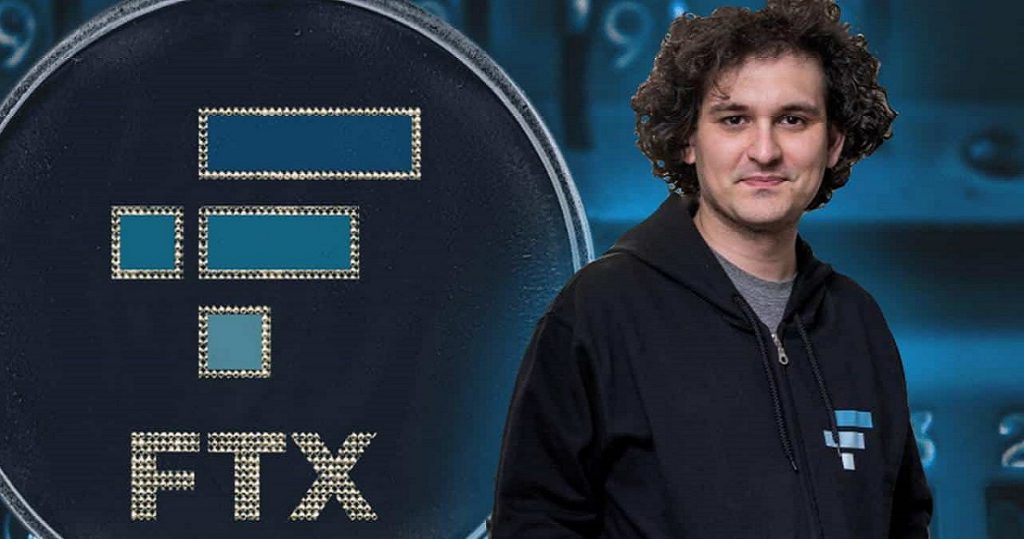The latest shock to the crypto ecosystem came late Tuesday (Nov 8) evening — when FTX, one of the largest cryptocurrency exchanges by trading volume, halted withdrawals.
FTX confirmed this news the next day, when FTX founder Sam Bankman-Fried (SBF) tweeted that FTX had “come to an agreement on a strategic transaction with Binance for FTX.com“.
This strategic transaction, as it turned out, was a potential acquisition of FTX by Binance, which was by far the largest cryptocurrency exchange on the market. Binance founder Changpeng Zhao, or CZ, confirmed this with a tweet soon after, revealing that Binance had signed a non-binding Letter of Intent (LOI), intending to fully acquire FTX.com.
However, CZ also stated that Binance has the discretion to pull out from the deal at any time, which it did on Nov 10. The reasons cited by Binance included reports on mishandled customer funds and alleged US agency investigations.
That evening, Justin Sun, founder of Tron, also entered the fray and promised to protect anyone holding Tron-related tokens, which can be traded on FTX.
This plan was put into action on Nov 11. FTX announced that they had reached an agreement with Tron to “establish a special facility to allow holders of TRX, BTT, SUN, and HT to swap assets from FTX 1:1 to external wallet”.
At the time of writing, Tron-based tokens are the only tokens that can be withdrawn.
Celsius 2.0?
How did this happen? Apparently, FTX was insolvent.
Suspicions were first raised last week, when CoinDesk published an article detailing Alameda’s balance sheet, and noted how much of the assets that Alameda listed were actually denoted in FTT — FTX’s token which gives FTX users discounts on trades.
For context, Alameda Research is also founded by SBF, and operates as the crypto trading arm of his business. Following this revelation, speculation began on Twitter about how solid Alameda’s, and by extension FTX’s, foundations were.
Some even went as far as to accuse SBF of using the same model that Celsius did to make money, effectively suggesting that FTX was pumping token prices, marking these as gains and assets, and using the inflated balances to raise cash through equity sales and loans.
This is where CZ and Binance come into the picture. Back in 2020 when FTX was just a startup, Binance was already a huge crypto exchange, and also a prominent investor into FTX. A year later, Binance decided to divest its shares.
CZ has since confirmed that as part of the exit, Binance received “roughly US$21 billion equivalent in cash”, denoted in BUSD and FTT. In the same tweet, CZ also confirmed that Binance would now be exiting its position and liquidating any remaining FTT on their books.
This, as it turns out, was the last straw. Users began to withdraw their holdings from FTX en masse, and the exchange saw US$6 billion in withdrawals within 72 hours, precipitating a liquidity crunch at FTX and prompting FTX to halt withdrawals.
What’s next for FTX?
Certainly, considering the actions that FTX could have taken, this course of action was considerably responsible.
Looking back, some leaders in the crypto space have behaved in horrendous ways. I’ve already spoken about how Do Kwon strong-armed his proposal through a vote and then effectively went on the run.
Celsius’ Alex Mashinsky has also withdrawn funds from Celsius and called investors unsecured creditors, before leaving the company as well.
Three Arrows Capital’s founders Zhu Su and Kyle Davies basically disappeared after the hedge fund was declared insolvent. And a week ago, it was revealed that Hodlnaut had actually deleted documents in order to downplay their own exposure to the Luna crash, after filing for bankruptcy protection.

In comparison, FTX and SBF have taken the high road. Instead of going all-in on some desperate gamble to save FTX from liquidation, they have kept the interests of their customers in mind, and brokered a deal that would cause the least collateral damage to their customers.
This, hopefully, should set the precedent for how tech giants and large companies should behave when the going gets tough — to consider the larger picture and their long-term interests, which lie with their customers and the company’s reputation.
Terraform Labs and Celsius have little credibility remaining, largely because of the actions that they took during the crypto winter when their companies were hit by the credit crunch. On the other hand, while some investors have begun to leave FTX, many are still expressing support for the exchange and for SBF.
Why? Because SBF has not abandoned its customers to save himself. He effectively told customers that they were the priority by offering to sell FTX to Binance in order to avoid liquidation, and since then, has continued to pursue other methods of stabilising the exchange without throwing customers under the bus.
So the question for FTX’s customers is not “who will fix this?”, but rather “how will SBF fix this?”
Sure, some are not confident in FTX’s ability to recover, and SBF’s reputation as FTX and Alameda’s founder has taken a hit. But to many, this is not an issue of excessive greed and a towering sense of self-importance causing the crash, but rather an unfortunate mistake that SBF will likely learn from in his future ventures.
The era of Binance Central Bank?
The other party in the equation of this saga was Binance. While some have expressed disappointment in it for not going through with the FTX acquisition, it is also important to consider what happened if Binance did.
First of all, Binance would have had to sort out the mess that SBF and FTX were in, essentially to take stock of FTX’s assets, which included huge sums of user deposits.
This, by itself, is a monumental task. Even in the depth of the crisis, around US$3 billion is being traded on the exchange. At the height of its popularity, FTX saw peak 24 hours trading volume reaching US$21 billion.

While this pales in comparison with Binance’s US$80 billion, FTX is still one of the largest exchanges in the world. The acquisition of FTX by Binance would put the latter firmly in control of almost all cryptocurrency trading worldwide, and effectively grant Binance a monopoly, with revenues that can dwarf the trading volumes of other exchanges.
The good news is that for now, Binance and CZ seem to be content with following regulations and complying with the demands of governments. CZ has repeatedly emphasised the need for Binance to open clear channels of communication with regulators and to diligently ringfence users’ deposits.
This latest episode has shown Binance’s willingness to bail out other exchanges in order to prevent a major crash in the crypto industry.
But we should not forget that this function has traditionally been carried out by regulators who are accountable to governments and sometimes electorates. Central banks may intervene to prevent the collapse of the banking system, or to ensure that key companies of national interest do not go bankrupt.

Binance has no such obligation. While what CZ and Binance had offered has been magnanimous, it should not be taken for granted. Sequoia Capital simply wrote off whatever stake they held in FTX, instead of offering any help — and they are completely within their rights to do so.
In the same way, Binance may decide not to offer any help, especially since cryptocurrency exchanges like FTX are its competitors.
The size of Binance, as it seems, may soon prove to be a problem in its own right. The rise of large megacorporations is already proving to be a problem in some advanced economies.
These companies are too big to fail, and are able to threaten retaliatory action when things do not go their way. BitMex founder Arthur Hayes is already infamous for his brazen boast that it costs just a coconut to bribe Seychellois authorities. Lest we think that this problem is far from our shores, Hayes is a longtime resident of Singapore.
While Binance has shown, at least so far, that this is unlikely, we have also yet to see how Binance will react when the crunch time comes for them.
Only time will tell how Binance answers that question, but in the meantime, Singapore would do well to ensure that it would not be negatively impacted by a Binance crash, in whatever form it may take. This may involve trying to regulate what is quite possibly an international monopoly with mobile assets and a presence in nearly every country.
Whose interests are being protected?
Additionally, we must consider how much of Binance’s willingness to help was due to their own self-interest in not seeing a crypto crash impact them as well, against their professed reason of protecting the crypto industry.
The offer by Tron to back its own token holders, as it seems, is facing this very criticism. Following Sun’s announcement of regular capital injections into FTX in order to allow its customers to withdraw Tron’s tokens, speculation abounded as to his intentions.
Ki Young Ju, co-founder and CEO of CryptoQuant, replied to FTX’s announcement with an outline of how Sun could stand to profit significantly from this, and questioning if FTX’s legal and compliance teams had confirmed the deal.
Isn't it illegal?
— Ki Young Ju (@ki_young_ju) November 10, 2022
1/ FTX allows withdrawals only for TRX & TRC20.
2/ Users exchange assets to TRX to request withdrawals.
3/ TRX price goes up like 50x in FTX.
4/ Justin deposits TRX into FTX and sells them.
5/ FTX users sell TRX in other exchanges with a significant loss. https://t.co/FKCV5IoGUu pic.twitter.com/91zrLugiuu
Ju speculated that since many FTX users were trying to withdraw tokens before the exchange went under, they might turn to the coins that FTX has announced can be withdrawn, thereby driving up the prices of these tokens on FTX.
Sun could then deposit these tokens on FTX, selling them at the high prices only found on FTX, while users who bought the tokens would have to sell them at a significant discount on other exchanges.
Ju’s speculation seems to be on the mark thus far, with Tron-based tokens selling at premiums of more than 1,000 per cent.

However, Sun could very much be acting in the interests of the community and not thinking about the profits that could be made.
But the possibility that someone who does not consider such tactics to be underhanded, instead of Sun, could instead have been the one to make the offer that Tron did — and used this to guarantee profit at the expense of consumers.
When issues like this arise, the line between acting in the public interest and acting for private interest can become extremely blurred.
The FTX saga as a whole has provided some valuable lessons. For FTX and SBF, they have acted with honour and responsibility, and put their customers before themselves. Crypto companies would do well to observe them, and at least learn from their behaviour during a crisis.
For the rest of the world, and for regulators in particular, the Binance offer may be shelved for now, but the potential for Binance to become too powerful remains on the horizon. And it is certainly not a solved question.
How regulators deal with such companies, and how governments respond to Binances actions, will be crucial to the development of the crypto space, and in determining the power dynamic between regulators and crypto companies.
Featured Image Credit: CryptoSlate
Also Read: A recap of the Terra-Luna crash and how Do Kwon ended up facing million-dollar crypto lawsuits










